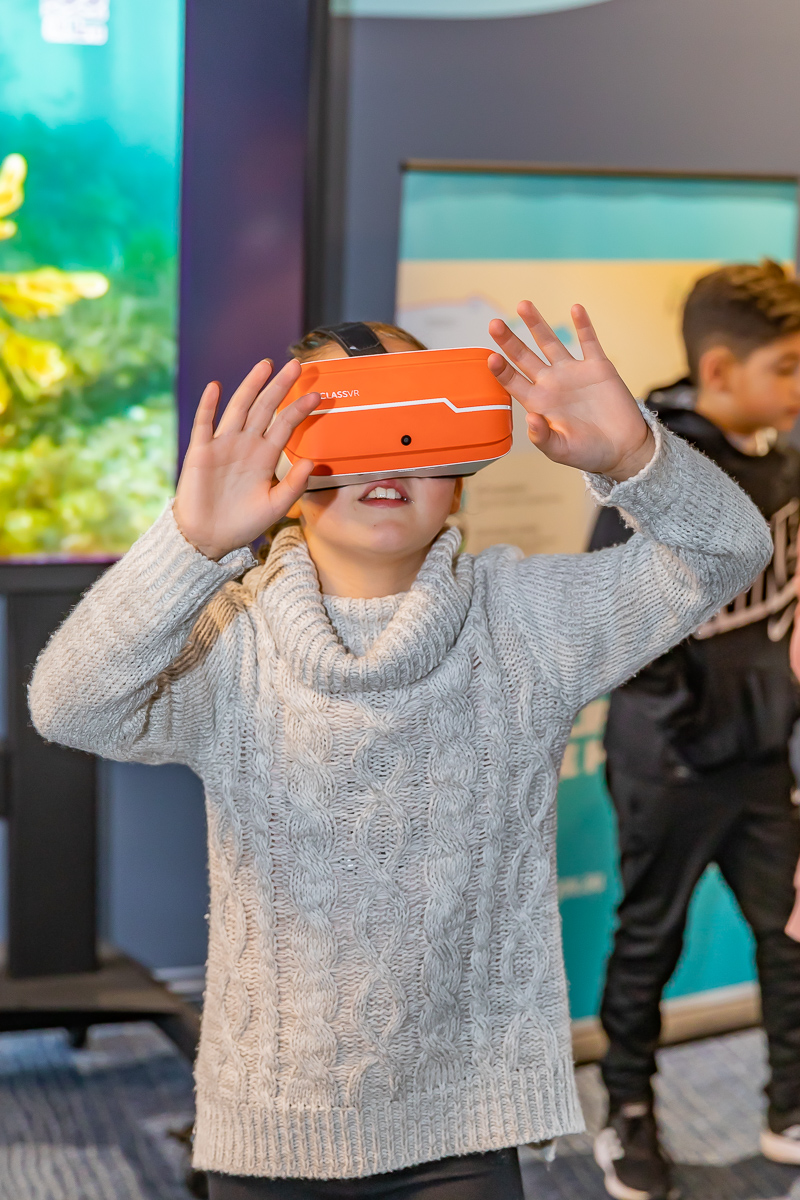
Virtual reality headsets, microscopes and more; the science exploration room puts you in control of your learning. The Marine Discovery Centre’s science exploration room gives students access to technology used by marine biologists in their research, as well as an understanding of South Australian creatures and marine life.

Virtual reality is a 3D software that gives the illusion the user is observing a given scenario. These machines have the ability to track a user's motions and correspondingly adjust the images on the user's display to reflect the change in perspective. Through virtual reality, the most popular aspect of the room, kids can deep sea dive with Great White Sharks and float with Leafy Sea Dragons in immersive South Australian landscapes.

“It looks so different on here!” exclaims a third grader, using a microscope, gripping the device with one eye shut. Microscopes are a vital aspect of Marine Biology research, with 3 common types of microscopy used being light microscopy, stereomicroscopy and polarising microscopy (Marine Biology, 2020). Light microscopy is a classic observation and characterisation technique for marine life in living, fixed and fossil organisms, which lays out biochemical, molecular and cell biology. Stereomicroscopy is used in the field to observe organisms in sea water samples. At the Marine Discovery Centre polarising microscopy is used to reveal fine detail in the crystalline structure of organisms through their fossil remains. Shells, seahorses and seaweed can be observed under a microscope to bear intriguing results.

Another noteworthy element of the room is the beachcombing area. Individuals can reveal what lies beneath the sand and identify it immediately. This segment also acts as a tool to describe marine habitats and facts about the seashore. For example, the intertidal zone, or the seashore, is the area above water at low tide and below water at high tide. This area can be home to sea stars, sea urchins and coral. Upwelling is also described, this being the process of bringing sunken nutrients back to the surface, creating “blooms” of algae and zooplankton, which consume said nutrients. This sustains ocean life near the surface, such as fish and plankton.
This room is filled with opportunities to be a marine biologist for an hour, come along and see what else we have waiting for you.
Online bookings
Marine Biology. (2020). Retrieved from Nikon: https://www.nikon.com/products/microscope-solutions/bioscience-applications/life_sciences/marine-biology.htm